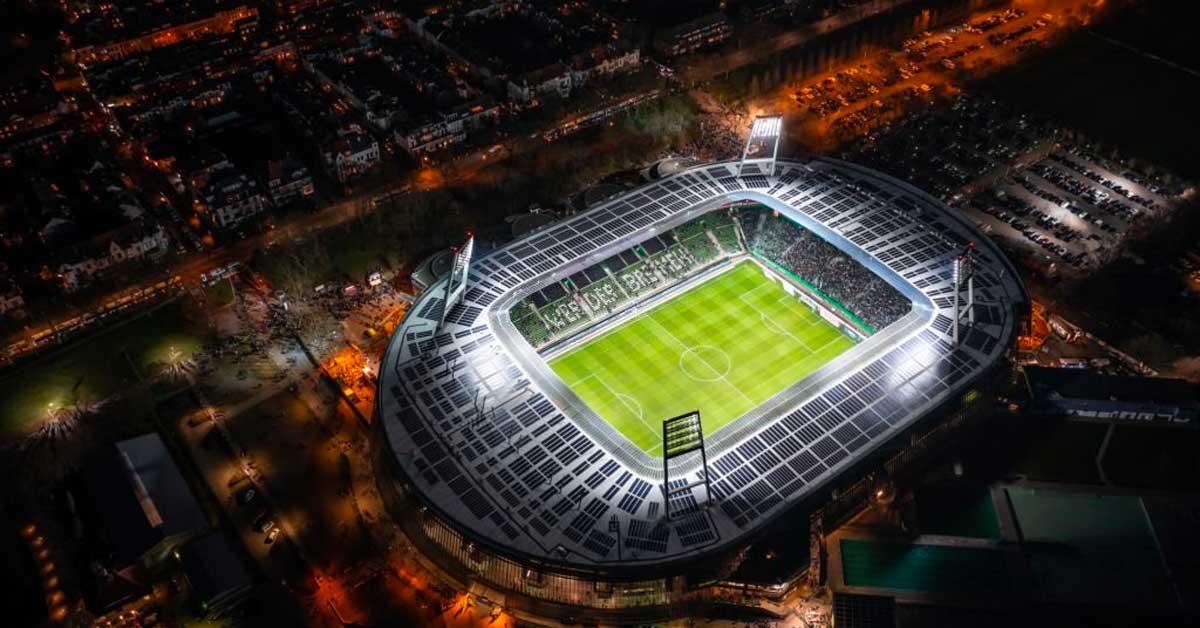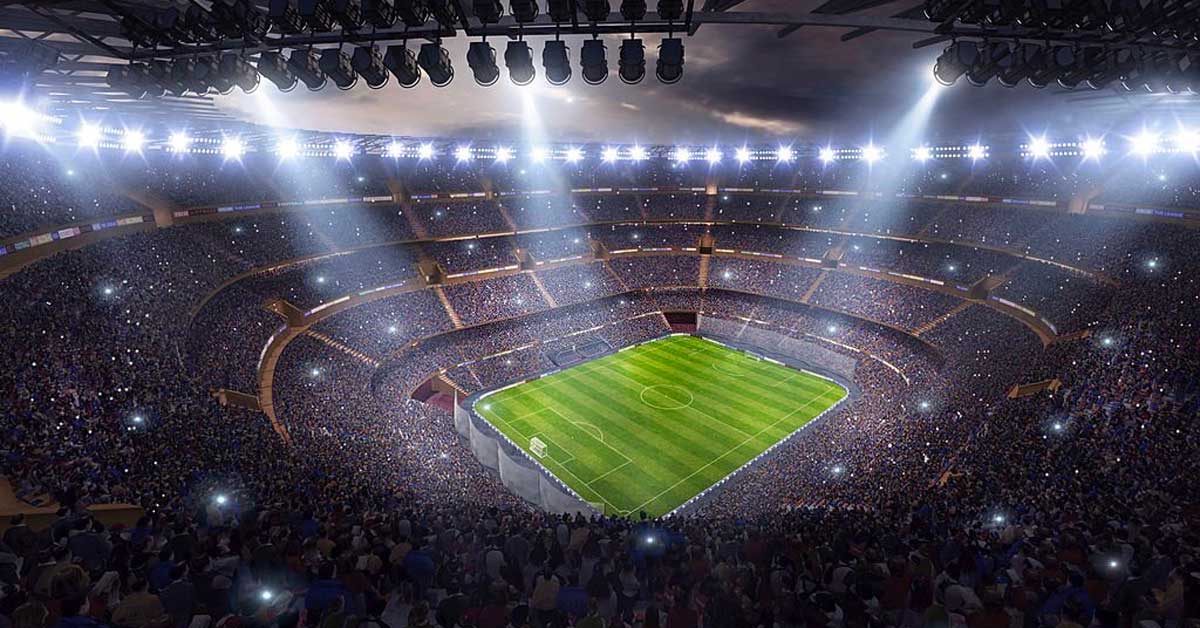Stadium can be categorized into different types based on various factors. Here are three common types of stadiums:
Outdoor Stadiums
These stadiums are designed for sporting events and other outdoor activities. They typically have open-air seating and are built to accommodate large crowds. Outdoor stadiums can be used for a wide range of sports such as football, baseball, soccer, athletics, and more. Examples of outdoor stadiums include Wembley Stadium in London, Camp Nou in Barcelona, and Yankee Stadium in New York.
Indoor Stadiums
Indoor stadiums, also known as arenas or domes, are enclosed structures designed for hosting events that require a controlled environment. They provide shelter from weather conditions and are equipped with artificial lighting and climate control systems. Indoor stadiums are commonly used for sports like basketball, ice hockey, volleyball, and concerts. Prominent examples of indoor stadiums include Madison Square Garden in New York, Staples Center in Los Angeles, and O2 Arena in London.
Multi-Purpose Stadiums
Multi-purpose stadiums are designed to host a variety of events, including sports, concerts, exhibitions, and more. These stadiums are versatile and can adapt to different requirements by utilizing movable seating, retractable roofs, and flexible field configurations. Multi-purpose stadiums are often built to accommodate both outdoor and indoor events, providing a combination of features from both types. Examples of multi-purpose stadiums include AT&T Stadium in Dallas, Mercedes-Benz Stadium in Atlanta, and MetLife Stadium in New Jersey.
It’s important to note that these categories can overlap, and some stadiums may exhibit characteristics of multiple types. Additionally, there are other specialized stadiums such as cricket grounds, racing circuits, and tennis stadiums, which have unique designs and features tailored to their respective sports.
The Cost to Build a Professional Soccer Stadium
The cost to build a professional soccer stadium can vary significantly depending on various factors such as location, size, design, materials used, infrastructure requirements, and additional amenities.
On average, constructing a professional soccer stadium can range from tens of millions to hundreds of millions of dollars. However, it’s important to note that there have been cases where stadium construction costs have exceeded these ranges.
For example, notable soccer stadiums such as Allianz Arena in Munich, Germany, and Wembley Stadium in London, England, cost approximately €340 million (around $400 million) and £757 million (around $1 billion), respectively, when they were built. These figures give you an idea of the potential costs involved in constructing a modern, state-of-the-art soccer stadium.
It’s worth mentioning that ongoing maintenance, operational expenses, and any necessary infrastructure development around the stadium should also be considered when evaluating the overall investment and cost associated with building a professional soccer stadium.

Stadium Construction Cost
Stadium construction costs can vary significantly depending on various factors such as location, size, design, materials used, and specific requirements of the project. The cost of building a stadium can be influenced by factors such as labor costs, land acquisition expenses, infrastructure development, and the inclusion of additional amenities.
To provide you with a general idea, here are some approximate construction costs for notable stadiums built in recent years:
- Mercedes-Benz Stadium (Atlanta, USA): The construction cost was approximately $1.6 billion.
- Tottenham Hotspur Stadium (London, England): The construction cost was estimated at around £1 billion (approximately $1.3 billion).
- SoFi Stadium (Inglewood, USA): The estimated construction cost was around $5 billion, making it one of the most expensive stadiums ever built.
- Allegiant Stadium (Las Vegas, USA): The construction cost was approximately $1.9 billion.
- Fisht Olympic Stadium (Sochi, Russia): The estimated construction cost was around $780 million.
It’s important to note that these figures are rough estimates and can vary based on factors specific to each project. Additionally, stadium construction costs can be influenced by regional variations in labor and material costs, regulatory requirements, and other local factors.
It’s always advisable to consult specific sources and conduct thorough research for accurate and up-to-date information on stadium construction costs, as they can vary widely based on individual circumstances and project specifications.
Stadium Construction Cost Per Seat
The construction cost per seat in a stadium can vary significantly depending on various factors, including the stadium design, materials used, location, amenities, and infrastructure requirements. It’s important to note that stadium construction costs are not solely determined by the number of seats but by the overall complexity and features of the stadium.
On average, the cost per seat in a stadium can range from a few hundred dollars to several thousand dollars. However, it’s important to keep in mind that these figures are general estimates and can vary widely based on individual projects.
Factors that can influence the cost per seat include:
- Stadium Design: The architectural design and complexity of the stadium can impact the cost per seat. Stadiums with unique features, innovative designs, or intricate structures may have higher construction costs per seat.
- Premium Amenities: The inclusion of premium amenities such as luxury suites, club seats, VIP areas, and high-quality facilities can significantly increase the cost per seat.
- Infrastructure Requirements: The need for additional infrastructure development, such as parking lots, roads, public transportation access, and utility connections, can affect the overall cost per seat.
- Location: Construction costs can vary depending on the regional labor and material costs, as well as the accessibility of the construction site.
- Construction Materials: The choice of construction materials, including the quality and durability of seating, can impact the cost per seat.
It’s worth mentioning that while the cost per seat can provide a rough estimate, it’s just one aspect of the overall stadium construction cost. Other factors, such as site acquisition, design fees, project management, and ongoing maintenance expenses, should also be considered when evaluating the total investment required for a stadium construction project.

Stadium Construction Cost Breakdown
The breakdown of stadium construction costs can vary depending on the specific project, location, and other factors. However, here is a general breakdown of the typical cost categories involved in stadium construction:
Design and Planning Fees: This category includes the fees associated with architectural design, engineering, and project planning. It involves the work of professionals who develop the stadium’s design, layout, and specifications. These fees can vary based on the complexity and scale of the project.
Site Acquisition and Preparation: This category includes the cost of acquiring the land or site where the stadium will be built. It also includes expenses related to site preparation, such as site clearance, excavation, and land grading.
Construction Materials and Labor: This category covers the cost of construction materials, including structural elements,
Cost to Build a 500 Seat Stadium
The cost to build a 500-seat stadium can vary depending on several factors, including location, design complexity, materials used, and additional amenities. However, to provide a general estimate, the construction cost of a 500-seat stadium can range from hundreds of thousands to a few million dollars.
Here is a rough breakdown of potential cost components for building a 500-seat stadium:
- Design and Planning Fees: This includes the cost of hiring architects, engineers, and consultants for designing and planning the stadium layout, structure, and amenities. This cost can vary depending on the complexity of the project and the extent of design services required.
- Site Acquisition and Preparation: This includes the cost of acquiring the land or site where the stadium will be constructed. It also covers expenses related to site clearance, excavation, land grading, and utility connections.
- Construction Materials: This involves the cost of materials needed for the stadium’s structure, seating, playing field, and infrastructure. This includes items such as steel, concrete, seating units, turf or artificial turf, and other necessary construction materials.
- Construction Labor: This includes the cost of labor required for the construction process, including skilled and unskilled workers, supervisors, and project management personnel.
- Utilities and Infrastructure: This category includes the cost of utilities and infrastructure development required for the stadium, such as electricity, water supply, drainage systems, lighting, and access roads.
- Amenities and Facilities: The cost of additional amenities and facilities, such as locker rooms, restrooms, concession stands, ticket booths, and spectator areas, should be considered.
It’s important to note that these cost estimates can vary significantly based on the specific requirements and circumstances of each project. Consulting with architects, contractors, or industry professionals would provide a more accurate estimate based on your specific needs and location.

